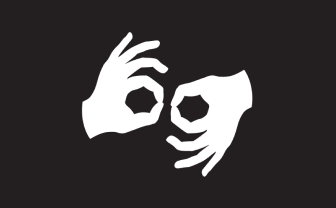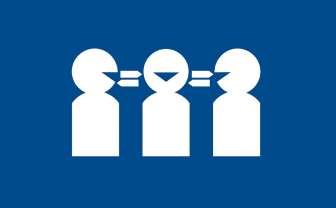Hepatitis C transmission
Hepatitis C is a blood-borne virus. That means it’s transmitted through blood. The only way hepatitis C can be transmitted is when the blood from someone with the virus enters the bloodstream of another person. This may happen through a cut, broken skin or punctured skin.
The hepatitis C virus cannot penetrate unbroken skin and is killed by the digestive juices in the stomach if it is swallowed.
Hepatitis C is not transmitted through touching, kissing, hugging or sharing food, or if blood comes into contact with unbroken skin.1
How is hepatitis C transmitted?
Everyone is at risk
Everyone is at risk of contracting hepatitis C. To reduce your risk of getting the virus, it’s important to be blood aware.
This means assuming that all blood and bodily fluids potentially contain viruses, including hepatitis B. Taking steps to avoid other people’s blood from coming into contact with yours can help reduce the risk of contracting the virus.
While anyone can contract hepatitis, there are some situations that can increase your risk.
Injecting drug use
VERY HIGH TO HIGH RISK
Unsafe sharing and re-using injecting equipment poses a high risk for contracting hepatitis C. In Australia, the vast majority of hepatitis C cases are transmitted this way.
Injecting equipment includes needles, syringes, spoons, swabs, tourniquets, water and filters.
In situations where people inject drugs, small amounts of blood may be present on a person’s finger, on a tourniquet, or on a bench top or tabletop. Transmission of hepatitis C may occur even if people don’t share or re-use needles.
Body art, piercing and beauty salons
MEDIUM TO LOW RISK
If body art (tattoo), piercing procedures and beauty treatments are not done under sterile conditions you may contact hepatitis C.
In Australia all body art operators and beauty salons are legally required to follow infection control guidelines which make it less likely for hepatitis C transmission. Body art and piercing procedures should always be carried out under sterile conditions. Body artists should use an on-site steriliser, sterile single-use needles and single-use ink pots and creams.
If you get a non-professional tattoo or piercing in a juvenile detention centre, prison, or by a backyard operator, or visit an amateur beauty salon your chance of becoming infected with the hepatitis C virus is very high. The equipment they use is often not clean and has nearly always been used on other people before your turn.
Tattoos, body piercing and other body art, which is done overseas, may carry a higher risk for contracting hepatitis C, even in a legal premise. This is because infection control procedures may not be as strict as tattoo studios in Australia.
Mother to baby
MEDIUM TO LOW RISK
Around 5% of babies may get the virus from a mother who has hepatitis C.2
The risk of transmission occurs during the birthing process when the mother’s blood is present and there is the possibility of a skin injury to the baby, allowing blood-to-blood contact. However, caesarean section is not a recommended means to reduce the transmission of hepatitis C.
It’s recommended that women with hepatitis C who are thinking of falling pregnant should be treated and cured first. Treatment is not recommended during pregnancy.3
Fathers who have hepatitis C cannot transmit the virus to the baby during conception or pregnancy. However, men with hepatitis C can only donate semen for assisted reproductive technology such as IVF if it’s for their spouse. Women with hepatitis C can still undergo IVF treatment and have their eggs collected.4
Hepatitis C can’t be transferred to babies through breastmilk. However, if a mother has cracked or bleeding nipples, she should express and discard her milk until her nipples are healed.
Needlestick injury in a health care setting
LOW RISK
A needlestick injury is when the skin is accidentally punctured by a used needle. These usually happen in occupational settings such as hospitals and clinics, where handling items with blood may also present a risk.
Overall, the risk of acquiring hepatitis C from needlestick (or sharps) injury in a health care setting is around 1.8%.5 This risk depends on several factors, such as the size and type of needle and the depth of penetration achieved.
It’s recommended health care and custodial workers are vaccinated against hepatitis A and B. They should also follow infection control precautions at all times.
Needlestick injury in a non-health care setting
VERY LOW RISK
You’re very unlikely to get hepatitis C through a needlestick injury while picking up rubbish or stepping on a used needle in a public place, such as a street, a park or a beach. As of 2019, there has only been three documented cases of hepatitis C transmission via community needle stick injury in the world.6
If you’re concerned about any needle stick injury, you should get tested.
Sexual transmission
LOW RISK
Hepatitis C is not a sexually transmissible infection (STI). Levels of the virus found in bodily fluids usually exchanged during sex such as semen, saliva and vaginal secretions, are not high enough to be considered as posing a risk.
For hepatitis C transmission to occur, blood from someone with the virus has to get into the blood stream of someone without the virus.
As with any activity, you should be careful if blood is likely to be present during sex.
For example, sex during menstruation, anal sex without a condom or, abrasive sex that may cause bleeding can all pose a risk. Risk is also increased if someone has sores or blisters in the genital region that may come into contact with a partner’s blood during sex.
Medical and dental procedures
Performed in Australia: EXTREMELY LOW RISK
Performed Overseas: VARIABLE RISK
In Australia infection control guidelines, designed to prevent the transmission of blood borne viruses and other diseases, such as hepatitis C are strictly adhered to in medical settings.
Some other countries may not have the same strict infection guidelines. Undergoing medical or dental treatment in overseas countries may increase your risk of getting hepatitis C.
Sharing personal grooming aids
EXTREMELY LOW RISK
Items used for everyday hygiene may present a possible transmission risk if blood is present.
To minimise the risk of transmission within the home, avoid sharing razor blades, toothbrushes (due to the possibility of bleeding gums) and sharp personal grooming aids. Consider using different coloured razors or toothbrushes to reduce accidental sharing.
Testing other people at risk
Because hepatitis C can be transmitted to others, we encourage all family members to be tested for the virus if one member of the family is diagnosed. This may be a difficult discussion to have in your family. However, you can call LiverLine on 1800 703 003 for advice and support around disclosure of your hepatitis C status.






